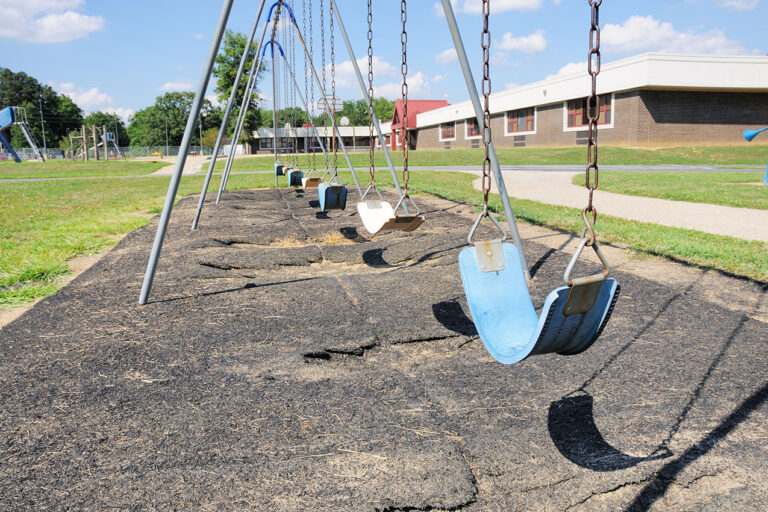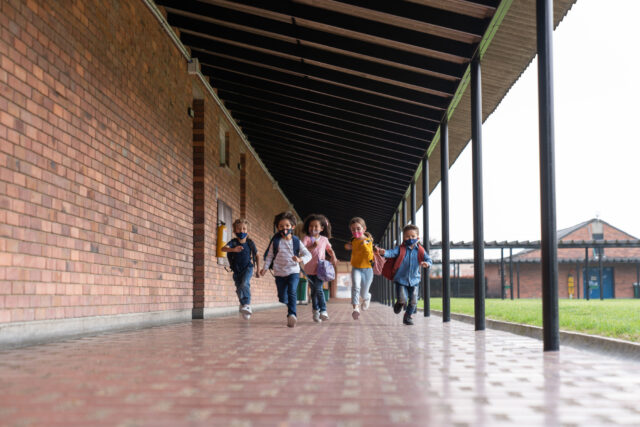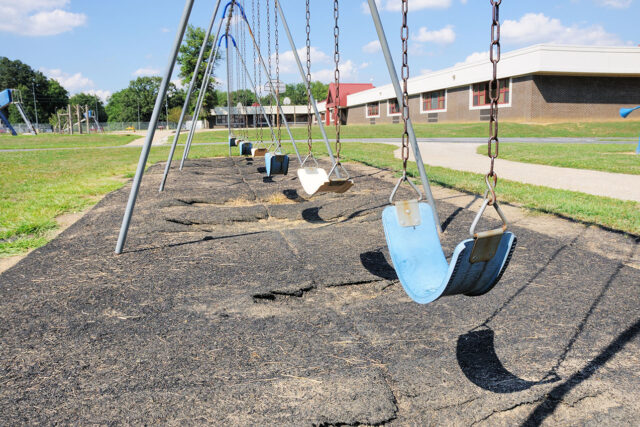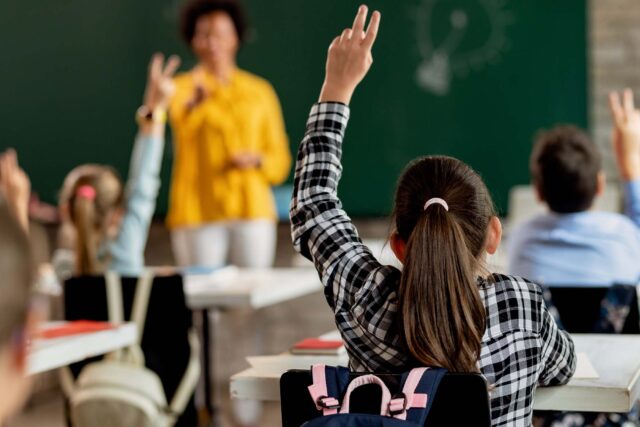Summary
The COVID-19 pandemic has highlighted the need for safe school facilities that protect the health of children and staff. With the first day of school just weeks away, most K-12 schools are likely to rely on distance learning for the start of the academic year. When schools do reopen, adhering to current guidelines on physical distancing, cleaning, and hygiene will require schools to use and operate facilities differently-an added pressure considering many schools were in need of important facilities improvements before the pandemic. In this report, we provide the first statewide evidence on the conditions of K-12 school facilities, based on data collected prior to the outbreak. We find:
- Statewide, 38 percent of students go to schools that do not meet the minimum facility standards. A quarter of students attend schools with damaged floors, walls, or ceilings, and 14 percent go to schools with malfunctioning electrical systems. Fifteen percent of students attend schools that have at least one extreme deficiency, with underlying issues like gas leaks, power failures, and structural damage. Districts with lower capital spending and smaller tax bases report higher levels of deficiencies.
- Between 2015-16 and 2018-19, 108 schools in 60 districts had to close temporarily due to poor facility conditions. Reasons for closure included broken water pipes, mold, pest infestations, heating system failures, and water contamination. The number of cancelled days ranged from 1 to 116, with an average of three lost school days per year.
- Facility needs go beyond basic building functionality. Many schools face capacity constraints due to student enrollment growth and lack the technological infrastructure to support digital learning. Schools also often need major renovations to address deferred maintenance, upgrade aging buildings, plan for natural disasters, improve energy efficiency, and ensure adequate accommodations for people with disabilities.
- COVID-19 has brought additional challenges. Many schools do not have sufficient building space to comply with federal and state reopening guidelines on smaller class sizes. In addition, significant construction, upgrades, and repairs may be necessary to improve ventilation systems, create larger classrooms, and reduce the risk of transmission in shared spaces like restrooms. Schools may also need to hire additional custodial staff and purchase extra supplies to allow for more frequent and thorough cleanings.
Accurate accounting of school facility conditions is essential to reopening schools in a safe and effective manner. Unfortunately, existing data on facility conditions are limited and likely understate schools’ needs. We recommend that the state begin collecting data to assess building capacity and needs, disaster preparedness, accessibility accommodations, and energy efficiency. Comprehensive data would also enable the state to allocate funds for school facilities in a more equitable and efficient manner-for example, by tying funding to districts’ capacity to raise local funds and prioritizing districts with the most urgent needs, as opposed to the current first-come, first-serve system.
Maintaining and improving California’s K-12 school facilities will involve significant new and ongoing costs-one estimate suggests more than $100 billion over the next decade. Yet in March 2020, voters rejected the largest school construction bond in the state’s history, along with many local construction bonds, and the state now faces the largest budget deficit since the Great Recession. The unpredictable nature of bond issuances has meant that state and local funding for facilities has been inconsistent over time. As policymakers explore ways to fund and improve school facilities, stable funding streams will be essential to help ensure that California’s schools provide students a safe and effective learning environment.
Topics
K–12 Education Population




